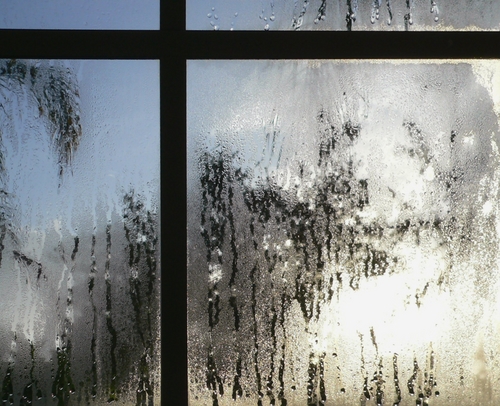Window Condensation in the Spring and Fall
Energy-efficient windows will occasionally have condensation on the exterior glass surface. This usually happens during periods of warm weather and high humidity near the time of sunrise. If you experienced a cool night followed by a warm morning and day, the outside of your windows may have excessive condensation.
Why condensation occurs
Condensation occurs most often during the spring and fall seasons when the weather fluctuates more often. Summer and winter generally hold steady temperatures, but spring and fall have shifting and unpredictable weather patterns. It occurs because rising temperatures raise the dew point – the point where air at a certain temperature/pressure will condense into water – on the outside of the glass. Meanwhile, the glass of your window may still retain some of the cold from the previous night. As a result, there is an imbalance between the dew point on the glass and the dew point outside the glass, which is corrected when condensation forms on the window.
Because energy-efficient windows greatly reduce the amount of heat escaping to the outside (which is good during the long periods of cold weather), the exterior glass surface is cool enough to allow condensation to form for a short period of time. This is typically a short lived situation and fog clears as soon as dew lifts.
Will my windows develop condensation?
Whether or not a window develops exterior condensation is actually a rather complex bit of environmental and performance issues. For example, you are much less likely to develop condensation on a cloudy night. Any trees or other obstructions close to the windows? Bushes under the windows? Even the length and angle of the soffit or other overhangs can affect the formation of condensation.



